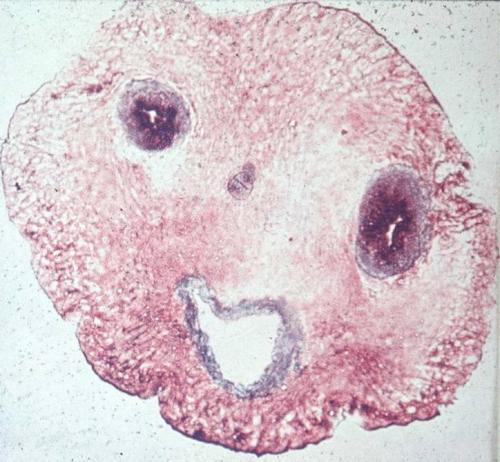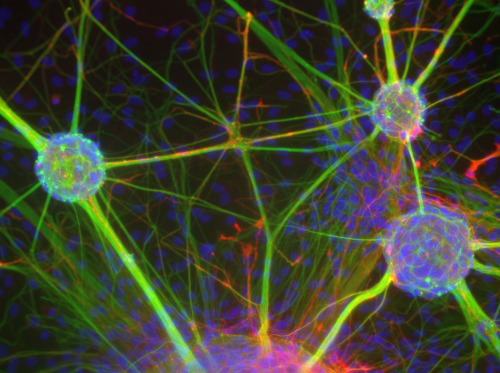Интересно о мнениях наркоманов о том, что они употребляют. Что опаснее - легальные или нелегальные вещества? Читаем: http://www.eurekalert.org/pub_releases/2009-11/ucl-duk112309.php
Drug users know their stuff
Drug users are well informed about the harms associated with the drugs they use, and perceive alcohol and tobacco to be amongst the most dangerous substances, according to a survey by UCL (University College London) and Imperial College London researchers. The findings, published in the Journal of Psychopharmacology, suggest that the current system of classifying psychoactive drugs in the UK may need to be revisited.
The study, led by Dr Celia Morgan and Professor Valerie Curran at UCL, surveyed 1,500 UK drug users via the website www.nationaldrugsurvey.org. Drug users were asked to rate twenty psychoactive substances on a 'rational' scale previously developed by Professor David Nutt, Imperial College London, who collaborated on this study. Heroin, crack and cocaine topped the list in terms of harm, but alcohol was rated fifth, solvents seventh and tobacco ninth. Ecstasy came 13th in the harm rating, LSD 16th and cannabis 18th. Thus, the survey found no relationship between the drug's legal status, based on the current classification system, and users' ratings of harm. In the UK, the Misuse of Drugs Act (1971) currently classifies psychoactive drugs as A, B or C, though alcohol and tobacco remain unclassified.
Dr Celia Morgan, UCL Clinical Psychopharmacology Unit, says: "Given that the Misuse of Drugs Act aims to signal to young people the harmfulness of drugs, this suggests a flaw with the current classification of drugs. We found that drug users rated legal substances such as alcohol and tobacco as more harmful than Class A substances like LSD and ecstasy. We found a high correlation between harm ratings by users and those made previously by scientific experts across all substances, suggesting users are well informed about the harms of drugs.
"The reported prevalence of use of each substance also suggests that the classification of drugs has little bearing on the choice of whether to use substances or not. For example ecstasy, a Class A substance, was the fourth most regularly used psychoactive drug, according to our survey.
"We also asked drug users about their perceived benefits of taking psychoactive substances, as this is clearly important in a person's decision of whether to take a drug or not. Psychoactive substances LSD, cannabis and ecstasy were consistently rated as having the highest short and long-term benefits. These findings add to the debate on the validity of the current classification of drugs in the UK.
"Worldwide, there are an estimated two billion alcohol users, 1.3 billion smokers and 185 million users of other drugs. Despite public health campaigns, levels of substance misuse continue to rise. One of the reasons for this may be the public's confusion about the actual risks of different drugs as they often receive conflicting messages from the legal system, the media and health campaigns. We recommend that future health campaigns consider whether to include the benefits of some drugs. By only citing harms, such campaigns likely represent – from a user's perspective – an unbalanced view and may mean that the overall message is more likely to be ignored."
The authors are following up the study with the launch of a new larger survey, in collaboration with the Beckley Foundation, hosted at www.internationaldrugsurvey.org.
17.12.2009
Что думают наркоманы?
09.12.2009
Аминокислотная диета для мозга
Особая диета для выздоровления мозгов :)ЧИТАЕМ:
http://www.eurekalert.org/pub_releases/2009-12/chop-waa120209.php
May set stage for treating brain damage in people
Neurology researchers have shown that feeding amino acids to brain-injured animals restores their cognitive abilities and may set the stage for the first effective treatment for cognitive impairments suffered by people with traumatic brain injuries.
"We have shown in an animal model that dietary intervention can restore a proper balance of neurochemicals in the injured part of the brain, and simultaneously improves cognitive performance," said study leader Akiva S. Cohen, Ph.D., a neuroscientist at The Children's Hospital of Philadelphia.
The study appears today in the online issue of the Proceedings of the National Academy of Sciences.
If these results in mice can be translated to human medicine, there would be a broad clinical benefit. Every 23 seconds, a man, woman or child in the United States suffers a traumatic brain injury (TBI). The primary cause of death and disability in children and young adults, TBI also accounts for permanent disabilities in more than 5 million Americans. The majority of those cases are from motor vehicle injuries, along with a rising incidence of battlefield casualties.
Although physicians can relieve the dangerous swelling that occurs after a TBI, there are currently no treatments for the underlying brain damage that brings in its wake cognitive losses in memory, learning and other functions.
The animals in the current study received a cocktail of three branched chain amino acids (BCAAs), specifically leucine, isoleucine and valine, in their drinking water. Previous researchers had shown that people with severe brain injuries showed mild functional improvements after receiving BCAAs through an intravenous line.
BCAAs are crucial precursors of two neurotransmitters—glutamate and gamma-aminobutyric acid, or GABA, which function together to maintain an appropriate balance of brain activity. Glutamate excites neurons, stimulating them to fire, while GABA inhibits the firing. Too much excitement or, too little, and the brain doesn't work properly. A TBI upsets the balance.
In particular, a TBI frequently damages the hippocampus, a structure deep in the brain involved in higher learning and memory. In the current study, the researchers found that an injury to the hippocampus reduced levels of BCAAs. Although overall levels of glutamate and GABA were unchanged, the loss of BCAAs disturbed the critical balance of neurotransmitters in the hippocampus, making some localized regions more excitable and others less excitable. Cohen's team tested the hypothesis that providing dietary BCAAs would restore the balance in neural response.
In this study, Cohen's study team first created standardized brain injuries in mice, and one week later compared the animals' conditioned fear response to that of uninjured mice. A week after receiving a mild electric shock in a specific cage, normal mice tend to "freeze" when placed in the same cage, anticipating another shock. The brain-injured mice demonstrated fewer freezing responses—a sign that they had partially lost that piece of learning.
On the other hand, brain-injured mice that received a diet of BCAAs showed the same normal response as the uninjured mice. The BCAA cocktail had restored their learning ability.
In addition to the behavioral results, the team conducted electrophysiological experiments in slices of hippocampus from brain-injured and non-injured mice, and showed that BCAA restored a normal balance of neural activity. "The electrophysiological results were consistent with what we saw in the animals' functional recovery," said Cohen.
If the results in mice can be reproduced in people, patients with traumatic brain injuries could receive the BCAAs in a drink. Cohen suggests that BCAAs as a dietary supplement could have a more sustained, measured benefit than that seen when patients receive BCAAs intravenously, in which the large IV dose may flood brain receptors and have more limited benefits.
Although much work remains to be done to translate the finding into a therapy, Cohen expects to collaborate over the next year with other researchers in an early-phase clinical trial of dietary BCAAs in patients with mild to moderate TBI.
###
The National Institutes of Health provided funding for this study. Cohen's co-authors were Jeffrey Cole, Ph.D., Christina M. Mitala, Ph.D., Suhali Kundu and Itzhak Nissim, Ph.D., all of Children's Hospital; Jaclynn A. Elkind of the University of Pennsylvania; and Ajay Verma, M.D., Ph.D., of the Uniformed Services University of the Health Sciences, Bethesda, Md. Cohen and Nissim are also on the faculty of the University of Pennsylvania School of Medicine.
About The Children's Hospital of Philadelphia: The Children's Hospital of Philadelphia was founded in 1855 as the nation's first pediatric hospital. Through its long-standing commitment to providing exceptional patient care, training new generations of pediatric healthcare professionals and pioneering major research initiatives, Children's Hospital has fostered many discoveries that have benefited children worldwide. Its pediatric research program is among the largest in the country, ranking second in National Institutes of Health funding. In addition, its unique family-centered care and public service programs have brought the 441-bed hospital recognition as a leading advocate for children and adolescents. For more information, visit http://www.chop.edu.










